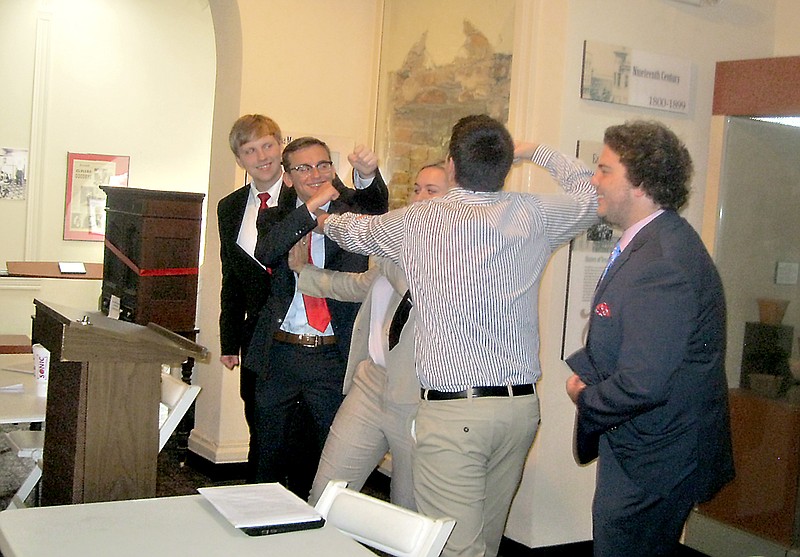Similar to President John F. Kennedy's assassination, the Apollo 11 moon landing also drew conspiracy theories- some of which were debated Saturday at the Texarkana Museum of Regional History.
The museum conducted its first event this month, celebrating the moon landing's golden anniversary, by featuring an hour-long debate forum between local high school and college students. The debate focused on whether or not this scientific accomplishment in July 1969, was a real lunar surface landing mission by U.S. astronauts or just a space race hoax.
Catey Hicks, a 2016 Hooks High School graduate, who recently earned a bachelor's degree in business management from Dallas Baptist University, served as debate moderator, while her brother, Texarkana College freshman Cade Hicks, and Hooks High School senior Garrett McCall served as a two-man debate team supporting the lunar landing's authenticity. Hooks High School senior Logan Buck and Benjamin Willis, a University of Arkansas-Fayetteville freshman, supported the hoax theory.
Catie Hicks opened the debate by stating that the world's first lunar landing's authenticity started being challenged as early as 1976 by a book ("We Never Went to the Moon: America's $30 Billion Dollar Swindle, by former U.S. Navy officer Bill Kaysing, according to Internet sources).
Buck spoke first by saying that the astronauts couldn't make it at all to the moon owing to the super intensive Van Allen radiation belt above the earth, which would have surely killed all three space voyagers at that time.
"No one could survive that much of a dose of radiation because the portion of the spacecraft the astronaut were in was made out of aluminum alloy," Buck said. "It would also be impossible for the 20-watt video cameras we had at that time to transmit images from the 238,500,00 miles the moon is in distance from the earth."
Buck also said that faking a lunar landing would have been the best way that the U.S. could beat Russia, then known as the Soviet Union, in the space race rivalry the two nations were embroiled in. At the time, both nations were seeking worldwide prestige, he added. This scientific competition was also part of the larger Cold War at that time.
Cade Hicks and Garrett McCall countered by saying that the rocks collected on the moon were measured in age to be at least 200 million years old-far older than Earth-meaning that they could not have possibly been faked by anyone referring to them as moon rocks (after collecting them from Earth and deliberately labeling them as moon rocks).
Hicks and McCall also said that the Soviet Union even admitted that the U.S. had landed on the moon first. Both anti-hoax team members also said that the astronauts were able to travel fast enough through the Van Allen radiation belt without being contaminated or melted by it.
Buck and Willis then countered by saying that NASA could still have faked the moon rocks since the agency was the only organization that was allowed to examine the rocks. Hicks and McCall countered by saying that every independent space observatory on Earth at that time confirmed that the landing took place. The debate ended with a rehash of the evidence presented by both sides.
The museum will be presenting at least three more anniversary programs before the end of this month.

